U.S. Economic Indicators
Throughout this site there are many discussions of economic indicators. At this time, the readings of various indicators are especially notable. This post is the latest in a series of posts indicating U.S. economic weakness or a notably low growth rate.
While many U.S. economic indicators – including GDP – are indicating economic growth, others depict (or imply) various degrees of weak growth or economic contraction. As seen in the April 2019 Wall Street Journal Economic Forecast Survey the consensus (average estimate) among various economists is for 3.0% GDP growth in 2018 and 2.1% GDP growth in 2019. However, there are other broad-based economic indicators that seem to imply a weaker growth rate.
As well, it should be remembered that GDP figures can be (substantially) revised.
Charts Indicating U.S. Economic Weakness
Below are a small sampling of charts that depict weak growth or contraction, and a brief comment for each:
Total Federal Receipts
“Total Federal Receipts” growth continues to be intermittent in nature since 2015. As well, the level of growth does not seem congruent to the (recent) levels of economic growth as seen in aggregate measures such as Real GDP.
“Total Federal Receipts” through March had a last value of $228,811 Million. Shown below is the measure displayed on a “Percent Change From Year Ago” basis with value 8.5%, last updated April 10, 2019:
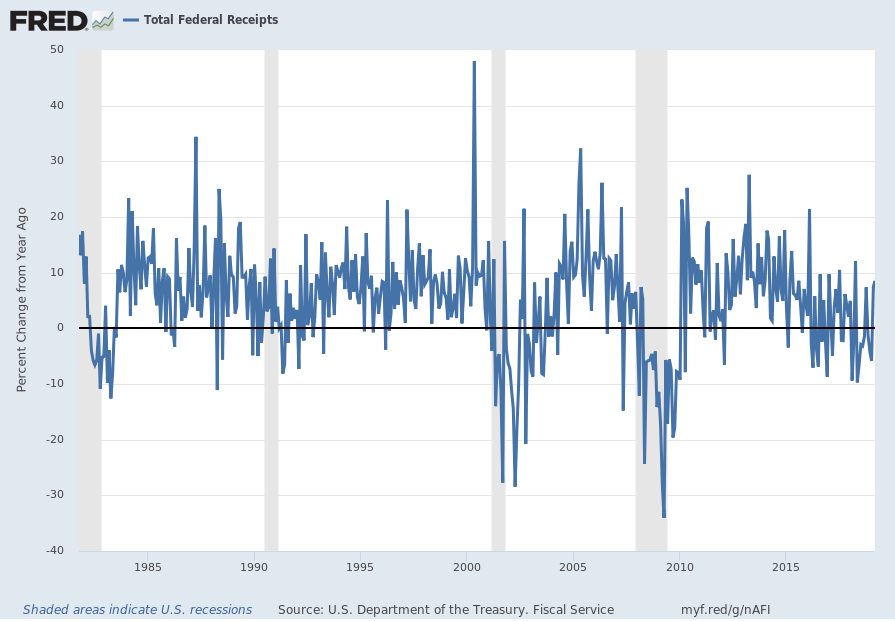
source: U.S. Department of the Treasury. Fiscal Service, Total Federal Receipts [MTSR133FMS], retrieved from FRED, Federal Reserve Bank of St. Louis; accessed April 10, 2019:
https://fred.stlouisfed.org/series/MTSR133FMS
__
Federal Government Current Tax Receipts: Personal Current Taxes
Another measure that depicts weak growth is that of “Federal government current tax receipts: Personal Current Taxes.” Through the fourth quarter the value is $1648.173 Billion Seasonally Adjusted Annual Rate (SAAR). Shown below is the chart, displayed on a “Percent Change From Year Ago” basis with value of .9%, last updated March 28, 2019:
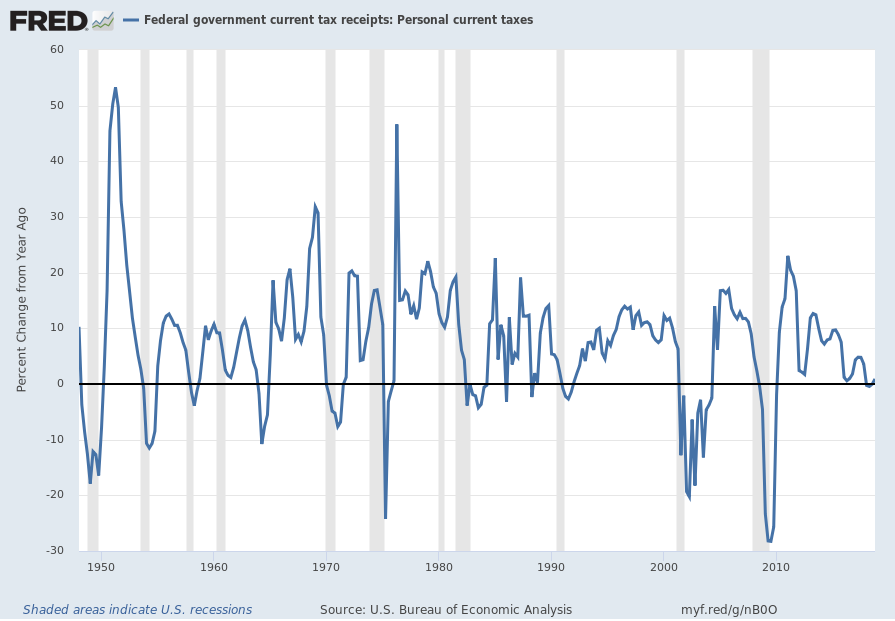
source: U.S. Bureau of Economic Analysis, Federal government current tax receipts: Personal current taxes [A074RC1Q027SBEA], retrieved from FRED, Federal Reserve Bank of St. Louis; accessed April 11, 2019:
https://fred.stlouisfed.org/series/A074RC1Q027SBEA
__
Federal Government Current Tax Receipts: Taxes On Corporate Income
Another measure that depicts contraction is that of “Federal government current tax receipts: Taxes On Corporate Income.” Through the fourth quarter the value is $160.899 Billion Seasonally Adjusted Annual Rate (SAAR). Shown below is the chart, displayed on a “Percent Change From Year Ago” basis with value of -39.1%, last updated March 28, 2019:
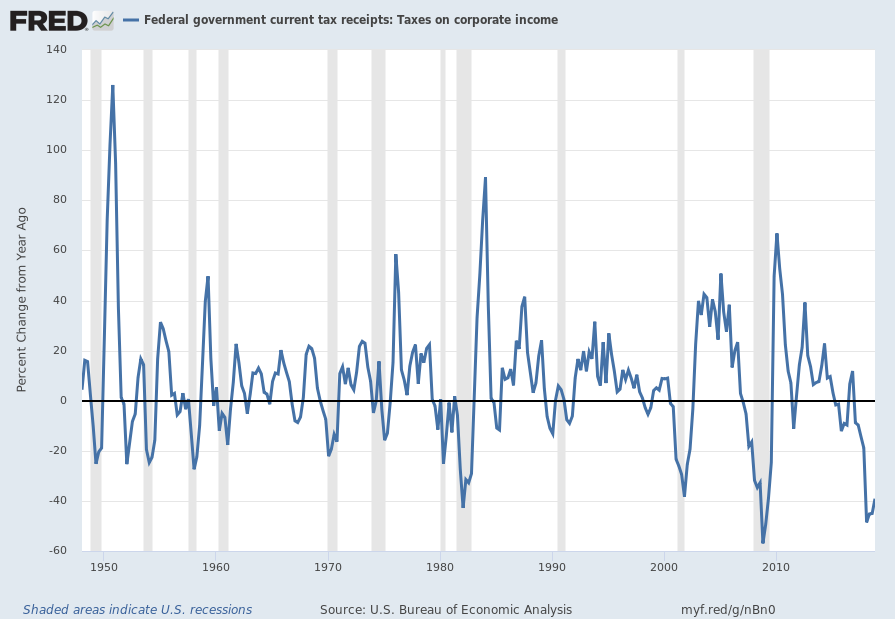
source: U.S. Bureau of Economic Analysis, Federal government current tax receipts: Taxes on corporate income [B075RC1Q027SBEA], retrieved from FRED, Federal Reserve Bank of St. Louis; accessed April 11, 2019:
https://fred.stlouisfed.org/series/B075RC1Q027SBEA
__
The Chicago Fed National Activity Index (CFNAI)
A broad-based economic indicator that has been implying weaker growth or mild contraction is the Chicago Fed National Activity Index (CFNAI).
The March 2019 Chicago Fed National Activity Index (CFNAI) updated as of March 25, 2019:
The CFNAI, with current reading of -.29:
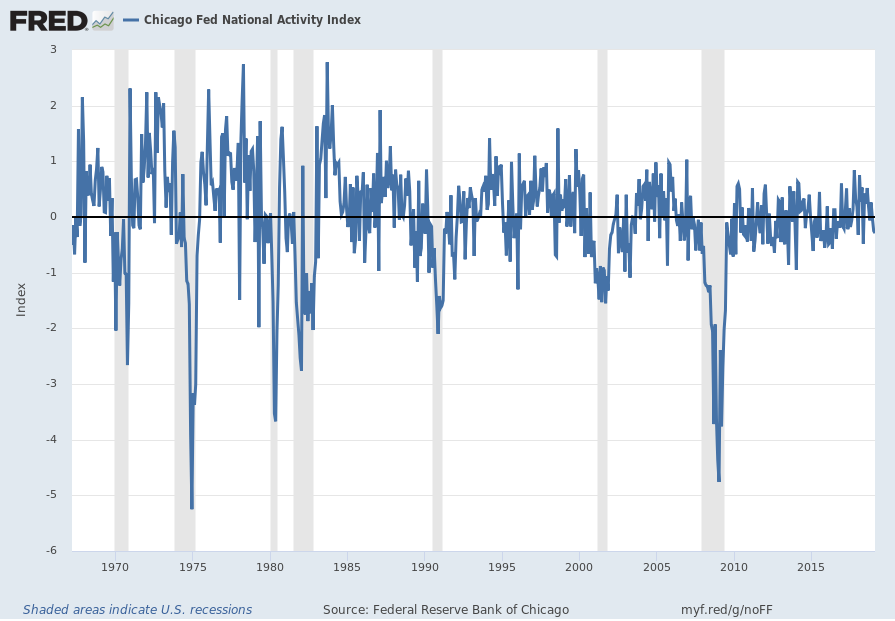
source: Federal Reserve Bank of Chicago, Chicago Fed National Activity Index [CFNAI], retrieved from FRED, Federal Reserve Bank of St. Louis; accessed March 25, 2019:
https://fred.stlouisfed.org/series/CFNAI
The CFNAI-MA3 (CFNAI three-month moving average) with current reading of -.18:
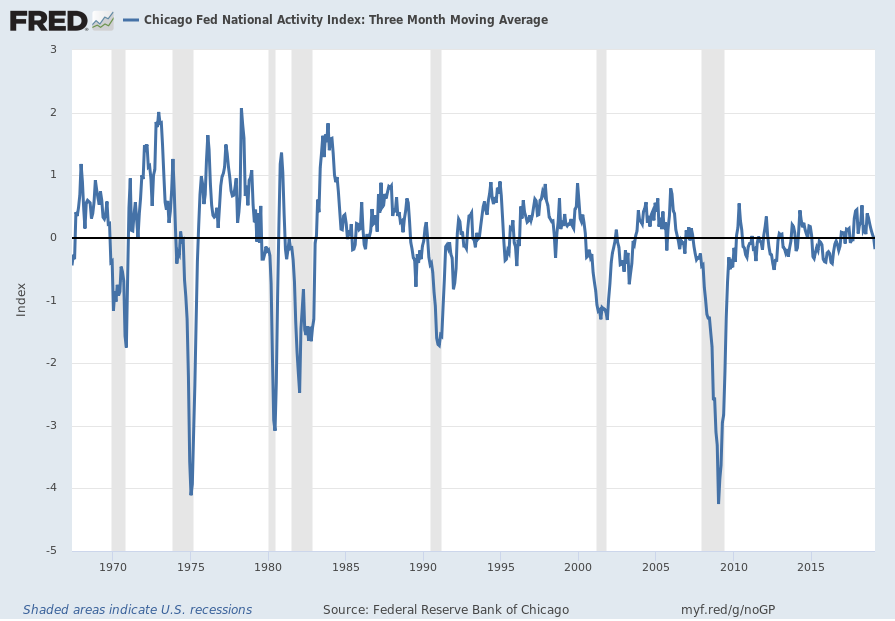
source: Federal Reserve Bank of Chicago, Chicago Fed National Activity Index: Three Month Moving Average [CFNAIMA3], retrieved from FRED, Federal Reserve Bank of St. Louis; March 25, 2019:
https://fred.stlouisfed.org/series/CFNAIMA3
__
Total Construction Spending: Commercial
“Total Construction Spending: Commercial” is a measure of construction exhibiting a contraction on a “Percent Change From Year Ago” basis. This measure through February had a last value of $87,810 Million. Shown below is the measure displayed on a “Percent Change From Year Ago” basis with a value of -5.6%, last updated April 1, 2019:
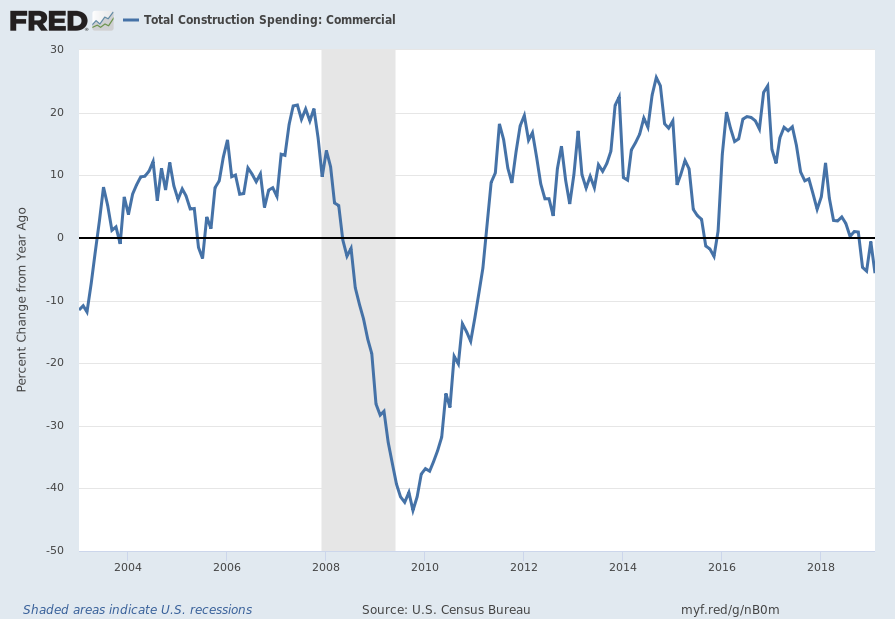
source: U.S. Bureau of the Census, Total Construction Spending: Commercial [TLCOMCONS], retrieved from FRED, Federal Reserve Bank of St. Louis, accessed April 11,2019: https://fred.stlouisfed.org/series/TLCOMCONS
__
Other Indicators
As mentioned previously, many other indicators discussed on this site indicate economic weakness or economic contraction, if not outright (gravely) problematical economic conditions.
_____
The Special Note summarizes my overall thoughts about our economic situation
SPX at 2888.32 as this post is written